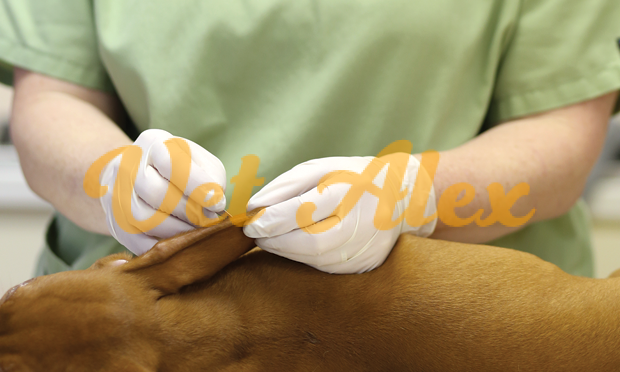Skin scraping is one of the most common dermatologic diagnostic tests to detect ectoparasites especially in cats and dogs skin.

skin scraping is a basic dermatological skill that techs, nurses, and Vets should learn.
What is Skin scraping?
Skin scrapes are usually performed to find ectoparasites such as mites, fleas, and lice ( but mainly it’s used to detect mites).
This relatively simple and quick test which can identify many types of parasitic infections.
Although not always diagnostic, the relative ease and low cost make it an essential test in a dermatological minimum database.
Multiple scrapes should be taken, but it is important to avoid being indiscriminate.
It is best to target your scrapes to primary lesions at the predilection sites and avoid excoriated skin.
This does entail using the history and clinical signs to rank the likelihood of different parasites in the differential diagnosis.
Types of skin scraping.
superficial scraping and deep scraping.
It is good practice to do a full sequence of superficial and deep scrapes at each site.
It is, in reality, difficult to precisely differentiate each level, and attempts to do so may result in missing the parasites.
the main difference is that in deep scraping we scrape untill blood oozing.
Skin scraping technique.
Materials for skin scraping.
- Gloves and safety are a must.
- Hair clipper.
- Glass slides
- Microscope.
- Mineral oil or paraffin oil.
- Hemostats.
- 10 blades (dulled) or blunt end of a metal spatula.
- Disinfection after the infected patient is a must.
Indications for skin scrapes.
this technique can be performed in any patient with alopecia, scales, pruritus, and mites suspicion.
special notes.
Some of the skin-scraping mites are zoonotic: so taking care and self-safety is a must.
Technique.
- Take precautions.
- Determine the best site for scraping (gross lesions).
- If there is hair, use a hair clipper or scissors without disturbance of the skin layers.
- Put a drop of mineral oil in the site.
- Pinch the skin with your left hand’s thumb and forefinger.
- Use your right hand to scrape the lesion with a blade.
- Any debris should be put on a slide.
- continue scraping till blood oozing.
- repeat these tips again.
- must be 10 scrapings at least to say there are no mites.
What can you find ?
- Sarcoptic mites.
- Otodectes mites.
- Demodectic Mites.
- Cheyletiella Mites.
see the images in the article below.
Questions & answers.
Should I scrape along the direction of the hair, never against the hair direction.
I’ve found scarping against the hair easier for me so I was wondering the reasoning behind this?
Its actually best if the hair is clipped a bit to allow the scraping to be done without the hair in the way; the hair can wipe off the debris on the blade and make scrapings falsely negative; if you scrape against the hairgrowth I imagine this may increase the interference from the hair, perhaps that’s why the protocol is written as such. Its also important to use a dull blade so that the skin is not cut, and to squeeze the skin periodically while scraping to help express mites from the follicles.
Kimberly Coyner, DVM Dipl. ACVD (1)
Reference:
(1) VIN.COM – https://www.vin.com/doc/?Id=8394614.
(2) Diagnostic Techniques in Veterinary Dermatology – 2017 – Neuber.
(3) Muller and Kirk’s Small Animal Dermatology.
(4) cliniciansbrief.com/article/skin-scraping-external-parasites
(5) https://www.zoetis.ca/conditions/dogs/dermatology/superficial-skin-scraping.aspx
If you are a Vet enter your e-mail to see the full version of the article.